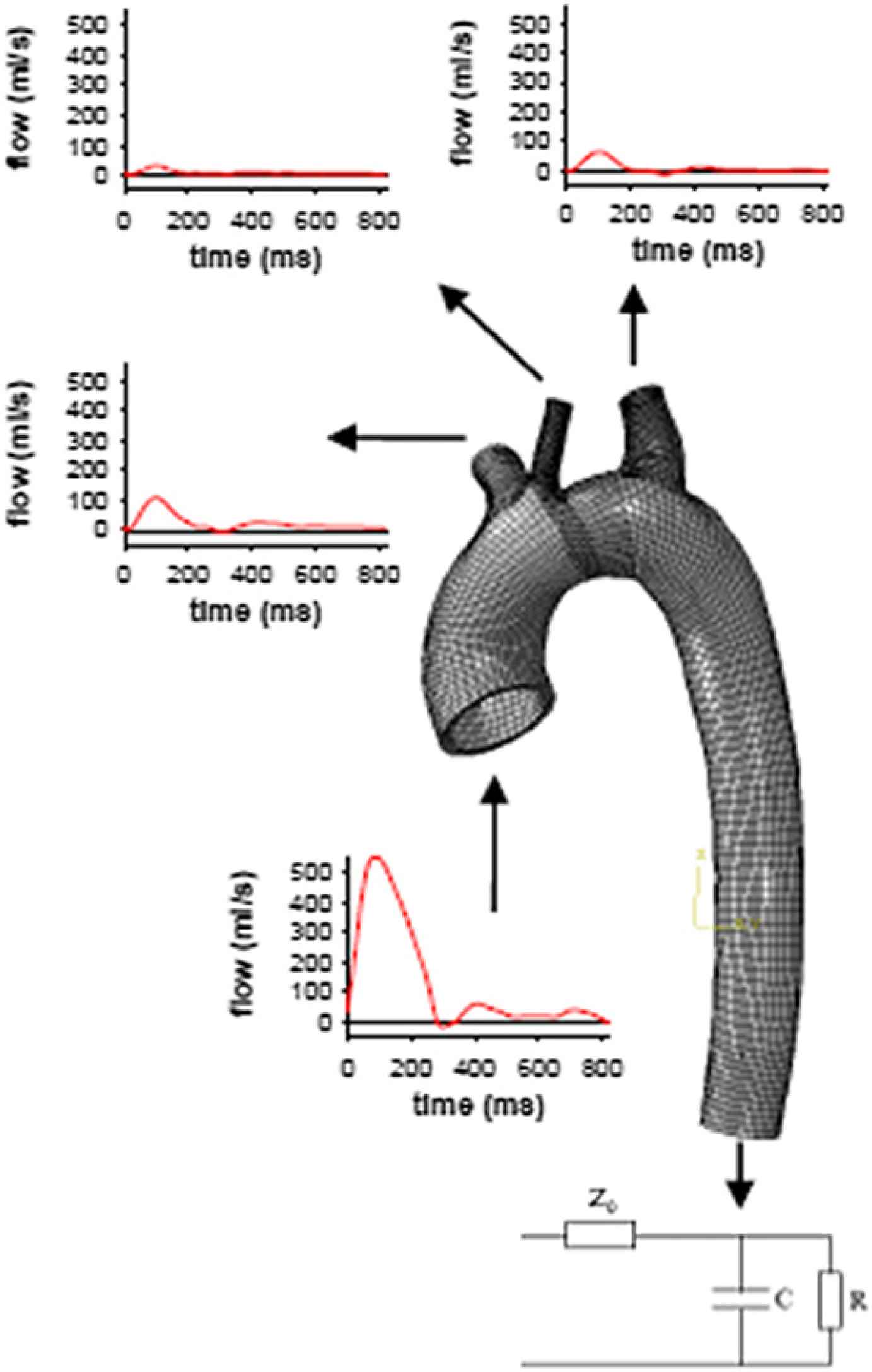6.2 PREDICTING THE FUNCTIONAL IMPACT OF RESIDUAL AORTIC COARCTATION LESIONS DURING EXERCISE USING ADVANCED COMPUTER MODEL SIMULATIONS
- DOI
- 10.1016/j.artres.2011.10.226How to use a DOI?
- Open Access
- This is an open access article distributed under the CC BY-NC license.
Background: Exercise can be used to unmask the functional impact of a residual narrowing and/or stiffening following treatment of aortic coarctation. Measurements of the hemodynamic response during exercise are, however, difficult to perform and not very accurate, as suspension of exercise during imaging can be required or a low temporal resolution might be insufficient at the high heart rates present during exercise. This work aims to predict central aortic hemodynamics during exercise using advanced modeling tools.
Material and methods: The geometry and the flow boundary conditions, used in this model, are obtained from MRI data at rest (Figure 1). As model simulations with rigid walls fail to capture important physiological phenomena such as wave propagation and reflections, the fluid-structure interaction between the blood flow and the deformation of the arterial wall is taken into account.

Patient-specific geometry and boundary conditions.
Results: The numerical model is first calibrated to the resting conditions such that the predicted aortic distensions match the measured values. Predicted velocities throughout the aorta are compared to 4D velocity measurements. Next, exercise conditions are simulated, with blood flows obtained using an MRI-compatible bycicle type ergometer, in which motion is restricted to the lower legs. Model output includes pressure along the aorta and velocity fields during exercise conditions.
Conclusions: Advanced modelling techniques allow to simulate aortic hemodynamics in 3D and are capable to provide complementary data that are difficult to obtain in vivo.
Cite this article
TY - JOUR AU - L. Taelman AU - J. Degroote AU - J. Bols AU - V. Muthurangu AU - S. Panzer AU - A. Swillens AU - J. Vierendeels AU - P. Segers PY - 2011 DA - 2011/11/29 TI - 6.2 PREDICTING THE FUNCTIONAL IMPACT OF RESIDUAL AORTIC COARCTATION LESIONS DURING EXERCISE USING ADVANCED COMPUTER MODEL SIMULATIONS JO - Artery Research SP - 144 EP - 145 VL - 5 IS - 4 SN - 1876-4401 UR - https://doi.org/10.1016/j.artres.2011.10.226 DO - 10.1016/j.artres.2011.10.226 ID - Taelman2011 ER -
